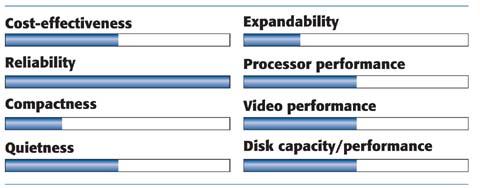Chapter 3. Building a Mainstream PC

A Mainstream PC is a PC that seeks balance at a reasonable price point. It uses top-quality (but midrange-performance) components throughout, because that is where you find the best value for your dollar. What differentiates a Mainstream PC from an Entry-Level PC is that the former makes fewer compromises. Whereas budget is always a very high priority for an Entry-Level PC, it is less important for a Mainstream PC. If spending more money yields better performance or reliability, a Mainstream PC gets those extra dollars, whereas an Entry-Level PC probably doesn’t.
This means that, relative to the Entry-Level PC, the Mainstream PC gets more, better, and faster everything. A better case and power supply, more memory, a faster processor, better video, a larger hard drive, a more capable optical drive, better mouse, keyboard, speakers, and so on. Considered individually, the incremental cost of better components is typically quite small. But taken collectively, the difference adds up fast. Depending on which components you choose, a Mainstream system may cost 50% to 100% more than an Entry-Level system. That extra money buys you higher performance now and down the road, and extends the period between upgrades. If an Entry-Level PC will meet your needs for 12 to 18 months without upgrades, a Mainstream PC may suffice for 24 to 36 months or longer, depending ...
Get Building the Perfect PC now with the O’Reilly learning platform.
O’Reilly members experience books, live events, courses curated by job role, and more from O’Reilly and nearly 200 top publishers.

